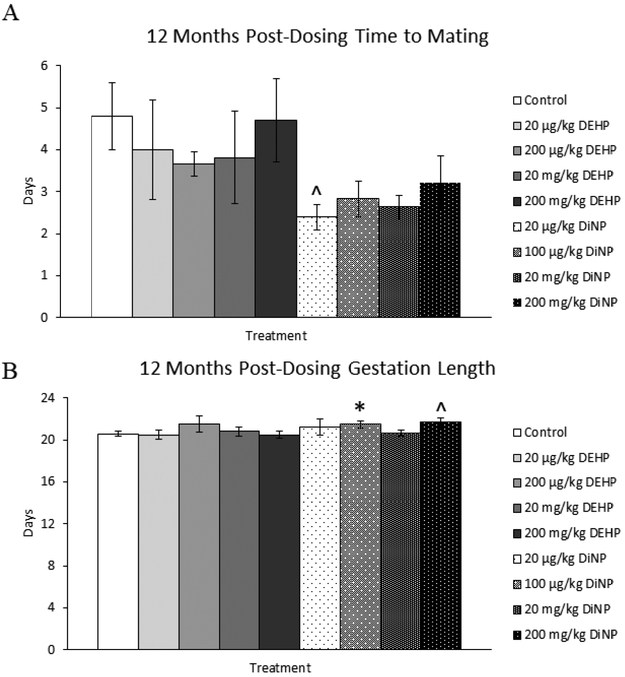Figure 6.
Effects of DEHP and DiNP on time to mating and gestation length at 12 months post-dosing. Female CD-1 mice were orally dosed at age 39–40 days for 10 days with either vehicle control (corn oil), DEHP (20μg/kg/day – 200 mg/kg/day), or DiNP (20μg/kg/day – 200 mg/kg/day). At 12 months post-dosing, females were paired with an untreated male mouse directly after completion of the estrous cyclicity monitoring period. Females were checked every morning and afternoon for the presence of a copulatory plug. If a copulatory plug was observed or if 14 days had elapsed, the female was put into a new clean cage. If a female presented with a copulatory plug the day immediately after introduction of the male, the time to mating was considered 1 day (control n = 19 mice/group, DEHP 20μg/kg/day – 200 mg/kg/day n = 9–11 mice/group, DiNP 20 μg/kg/day – 200 mg/kg/day n = 9–12 mice/group) (A). The day the copulatory plug was observed was considered day 0.5 of gestation (control n = 13 mice/group, DEHP 20μg/kg/day – 200 mg/kg/day n = 4–10 mice/group, DiNP 20 μg/kg/day – 200 mg/kg/day n = 4–10 mice/group) (B). Females were checked morning and afternoon starting a week before the expected delivery date of the litter. Statistical significance (p ≤ 0.05) is denoted with an asterisk (*). Data are represented as means ± standard error. Borderline statistical significance (0.05 < p ≤ 0.10) is denoted with a caret (^).

